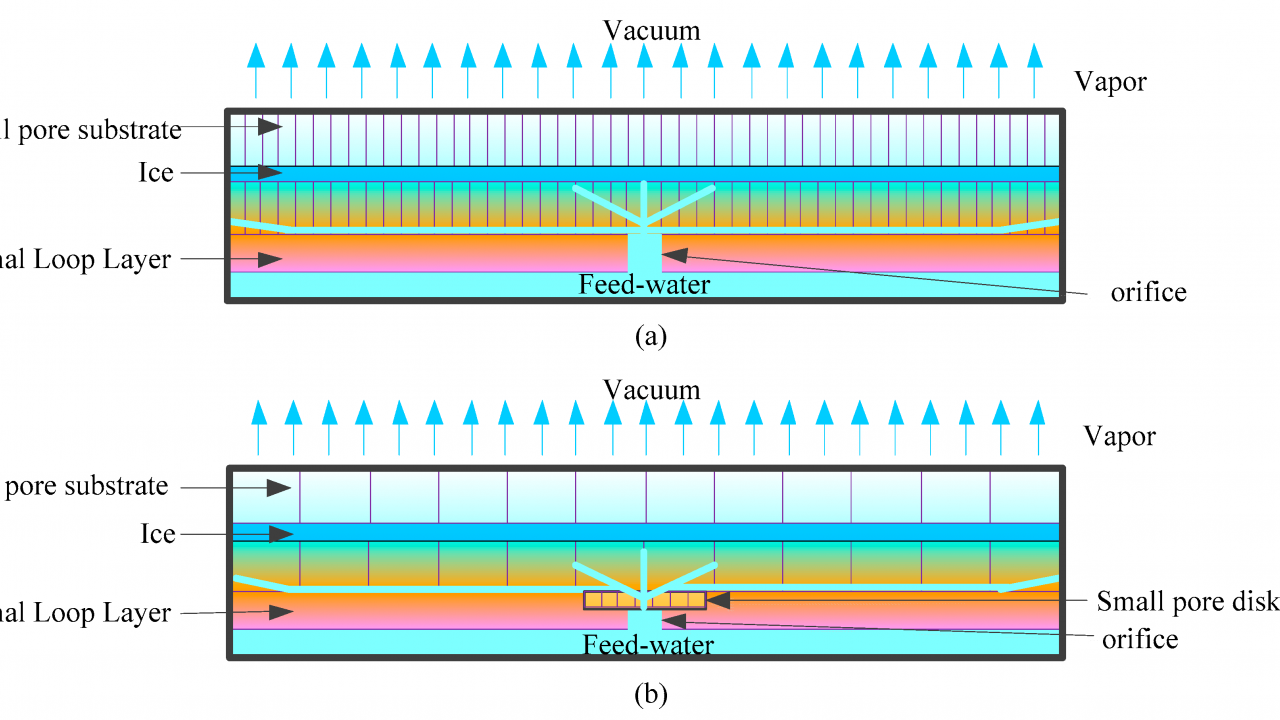
Ice Sublimation for Cubesat Heat REjection Amid Microgravity (I-SCHREAM)
CubeSats are becoming more capable but are still limited compared to full-scale satellites. Typically, there is no thermal control system to dissipate heat from the CubeSat avionics which limits the onboard computing power. A thermal control system will allow CubeSats to fly more powerful computers, enabling more complex experiments to be conducted. Sublimators are a passive thermal control option with proven flight history. During sublimation of ice to water vapor, large amounts of thermal energy (heat) can be transferred away from a heat source in the vacuum of space due to water’s high latent heat. For over 50 years, sublimation phase-change technology has been utilized as a heat rejection mechanism to cool astronauts on spacewalks. Even though sublimators have been used as spacesuit cooling technology for decades, there have been minimal modeling efforts toward understanding this heat and mass transfer process.
In a CubeSat sublimator, liquid water from a supply line freezes on a porous component, and heat from the electronics transforms the ice into water vapor. The porous component passively regulates the sublimation rate and the amount of heat dissipated by providing a resistance to water vapor flow exiting the sublimator. The I-SCHREAM team is investigating the driving factors in a sublimator through two phases of research. The first phase includes the development of an analytical model of gaseous flow through the porous component based on existing microflow models. This model will be validated and correlated with experimental demonstrations in a vacuum chamber. The second phase includes incorporating the porous-component flow resistance into a comprehensive sublimator model. In the future, a sublimator assembly for a CubeSat will be tested in a vacuum environment for additional model validation.
